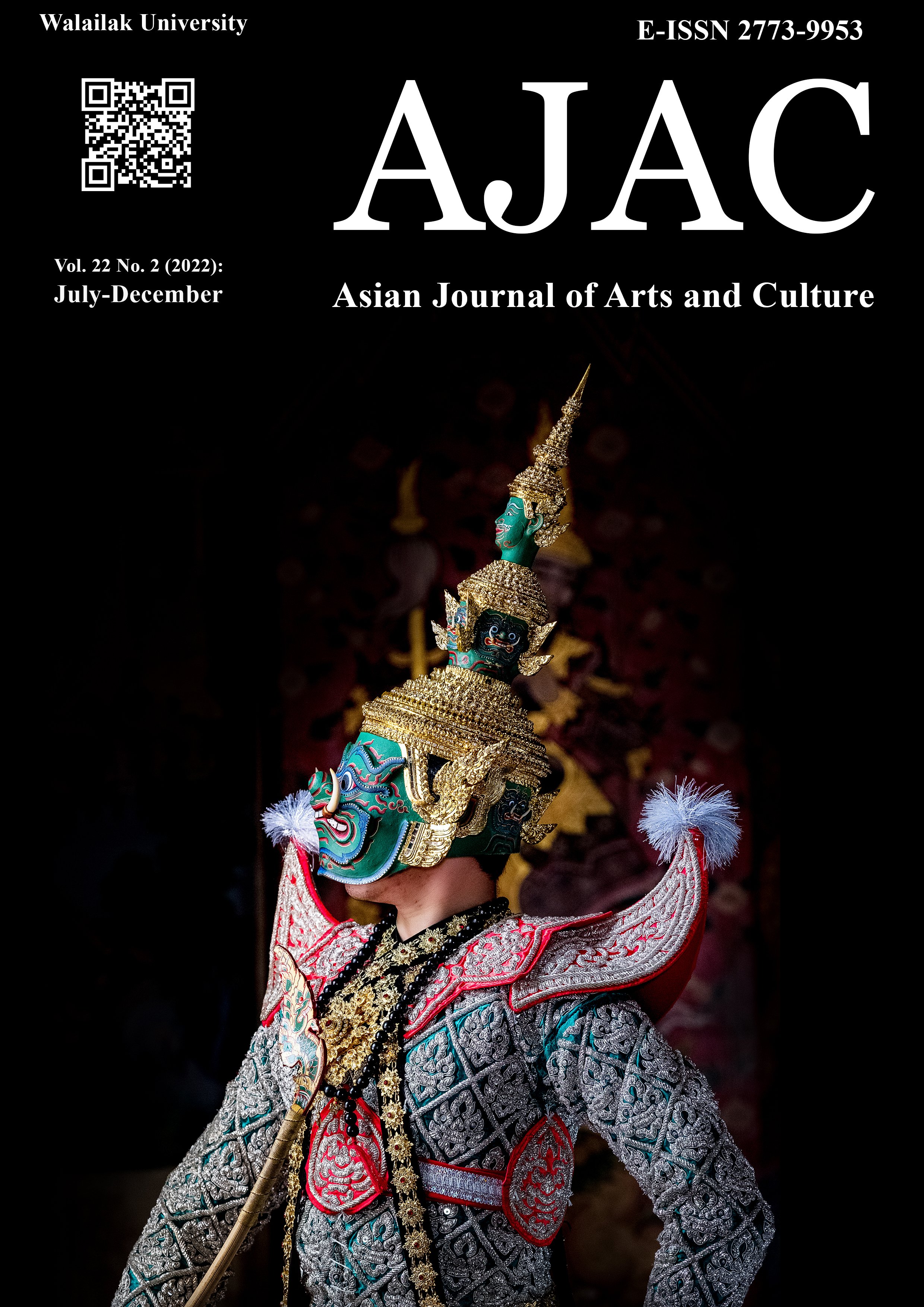Creative Expression on How Do Artists Communicate Their Message: An Arts in Development Article Critique
Main Article Content
Abstract
This article critique aims to determine and evaluate the strengths and shortcomings of the article titled "Creative Expression—How do Artists communicate their message?" by Evan Tublitz in 2014, reviewed and critiqued in order to evaluate and analyze the role of art and artists in development and to draw new perspectives on life, as art is primarily a means of communication. Language-bound ideas are often conveyed through painting, sculpture, and music, and they do so to reveal new perspectives, just like other artists. Seeing and understanding artwork is necessary to express oneself and understand the world. This attitude comes through in the art. The artistic framing and communication of ideas captivated the author to consider the whole piece or section to form an intellectual idea—an artist shapes and glazes clay to express ideas; artists, like musicians, begin with an idea. During this event, we all maximized our contributions to the bodies of knowledge, liberty, and freedom. In addition, there are many ways to express oneself in photography. The artist gives us a new perspective as it shows how intellectual and emotional concepts influence perceptions of the world. Emotions, thoughts, images, and ideas are elicited by humans who want to educate, persuade, move, and broaden their minds. In conclusion, the artist as philosopher's role is to inspire, comprehend, and transform others, and possibly to transfer this knowledge. Art is created to express itself. The audience consumes and interacts with art, where ideas are acquired and communicated.
Article Details

This work is licensed under a Creative Commons Attribution-NonCommercial-NoDerivatives 4.0 International License.
© 2018 by Asian Journal of Arts and Culture, Walailak University. All rights reserved.
References
Bravo, C. D. S., Dimalanta, F. D. R., Jusay, K. A. P., Vitug, M. Y., & Tabuena, A. C. (2022). Inclination state on the Philippine culture and arts using the appraisal theory: Factors of progress and deterioration. Participatory Educational Research, 9(1), 388-403. https://doi.org/10.17275/per.22.21.9.1
Creswell, J. W. (2009). Research design: Qualitative, quantitative, and mixed methods approaches (3rd ed). California, USA: SAGE Publications, Inc.
David, N. D. (2021). School of Living Traditions on Aeta Magbukon indigenous knowledge: promoting indigenous food plants for food security. Humanities, Arts and Social Sciences Studies, 21(3), 518- 534. https://doi.org/10.14456/hasss.2021.47
De Souza, R., Parveen, R., Chupradit, S., Velasco, L. G., Arcinas, M., Tabuena, A. C., ... & Ventayen, R. J. M. (2021). Language teachers’ pedagogical orientations in integrating technology in the online classroom: Its effect on students motivation and engagement. Turkish Journal of Computer and Mathematics Education, 12(10), 5001-5014. https://turcomat.org/index.php/turkbilmat/article/view/5268
Desai, R. (2019, May 24). Science of music. Retrieved from https://drrajivdesaimd.com/2019/05/24/science-of-music/
Lambert, V. A., & Lambert, C. E. (2012). Qualitative descriptive research: An acceptable design. Pacific Rim International Journal of Nursing Research, 16(4), 255-256. https://he02.tci-thaijo.org/index.php/PRIJNR/article/view/5805
Sakda, P., Krourat, B., & Watthanachanobon, W. (2021). The development of product design from natural materials. Humanities, Arts and Social Sciences Studies, 21(3), 601-608. https://doi.org/10.14456/hasss.2021.52
Tabuena, A. C., Morales, G. S., & Perez, M. L. A. C. (2021). Music assessment techniques for evaluating the students’ musical learning and performance in the Philippine k-12 basic education curriculum. Harmonia: Journal of Arts Research and Education, 21(2), 192-203. https://doi.org/10.15294/harmonia.v21i2.32872
Tabuena, A. C., & Morales, G. S. (2021). Illustrative multiple choice test items on the taxonomy of cognitive objectives in assessing and evaluating musical learning. Language Teaching and Educational Research, 4(1), 59-75. https://dergipark.org.tr/en/pub/later/issue/62963/956810
Tabuena, A. C., Hilario, Y. M. C., & Buenaflor, M. P. (2021). Overview and exemplar components of the research methodology on the research writing process for senior high school students. International Journal of Trend in Scientific Research and Development, 5(3), 117-126. http://dx.doi.org/10.2139/ssrn.3802722
Tabuena, A. C., & Hilario, Y. M. C. (2021). Research data analysis methods in addressing the K-12 learning competency on data analysis procedures among senior high school research courses. International Journal of Recent Research and Applied Studies, 8(3), 1-7. http://dx.doi.org/10.2139/ssrn.3795969
Tabuena, A. C., & Domingo, C. P. (2021). Analyzing Contemporary Philippine Art Forms and Critiquing Available Local Materials and Appropriate Techniques Used in Creating Art. International Journal of Applied Arts Studies (IJAPAS), 6(1), 83-100. http://ijapas.ir/index.php/ijapas/article/view/356
Tabuena, A. C. (2020). A literature review on the construction of a teacher-made assessment tool in music listening response competency for junior high school K to 12 music curriculum. The International Journal of Humanities & Social Studies, 8(4), 157-163. https://doi.org/10.24940/theijhss/2020/v8/i4/HS2004-065
Tublitz, E. (2014, January 28). Creative expression: How do artists communicate their message? New York, USA: Hudson Sounds.
Vibulpatanavong, K. (2020). Developing Attitudes of Primary School Students Towards Peers with Specific Learning Disorder Through Creative Stories. Humanities, Arts and Social Sciences Studies, 20(3), 868-884. https://doi.org/10.14456/hasss.2020.35
Zimmermann, K. A. (2017). What is culture? Retrieved from https://www.livescience.com/21478-what-is- culture-definition-of-culture.html


